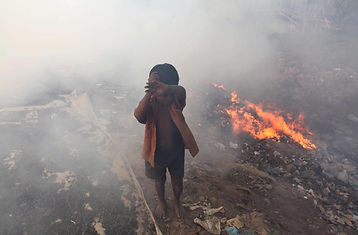
Health Crisis
Public health has improved markedly in Bangladesh over the past three decades. Health and education levels remain relatively low, although they have improved recently as poverty levels have decreased.
The health and sanitation environment also affects malnutrition. Inadequacies in water supply, hygiene and sanitation have direct impacts on infectious diseases, such as malaria, parasitic diseases, and schistosomiasis. People are exposed to both water scarcity and poor water quality. Groundwater is often found to contain high arsenic concentration.
Undernourished mothers often give birth to infants who will have difficulty growing up and developing into a healthy teenager.
As a result, Bangladesh has a high child mortality rate.
Malnutrition

Bangladesh has almost 800,000 blind people (out of a population of 90 million), of whom 40,000 are children under the age of 15. Since 2004, more than 6,562 have been diagnosed with cataracts and 90% have received eye-restoring surgery.
Blindness

It is due to increase in the numbers of motorized vehicles and industries in the cities of the developing world. Air pollution can affect our health in many ways with both short-term and long-term effects. Short-term air pollution can aggravate medical conditions like asthma and emphysema. Long-term health effects can include chronic respiratory disease, lung cancer, heart disease, and even damage to other vital organs.
Air pollution



